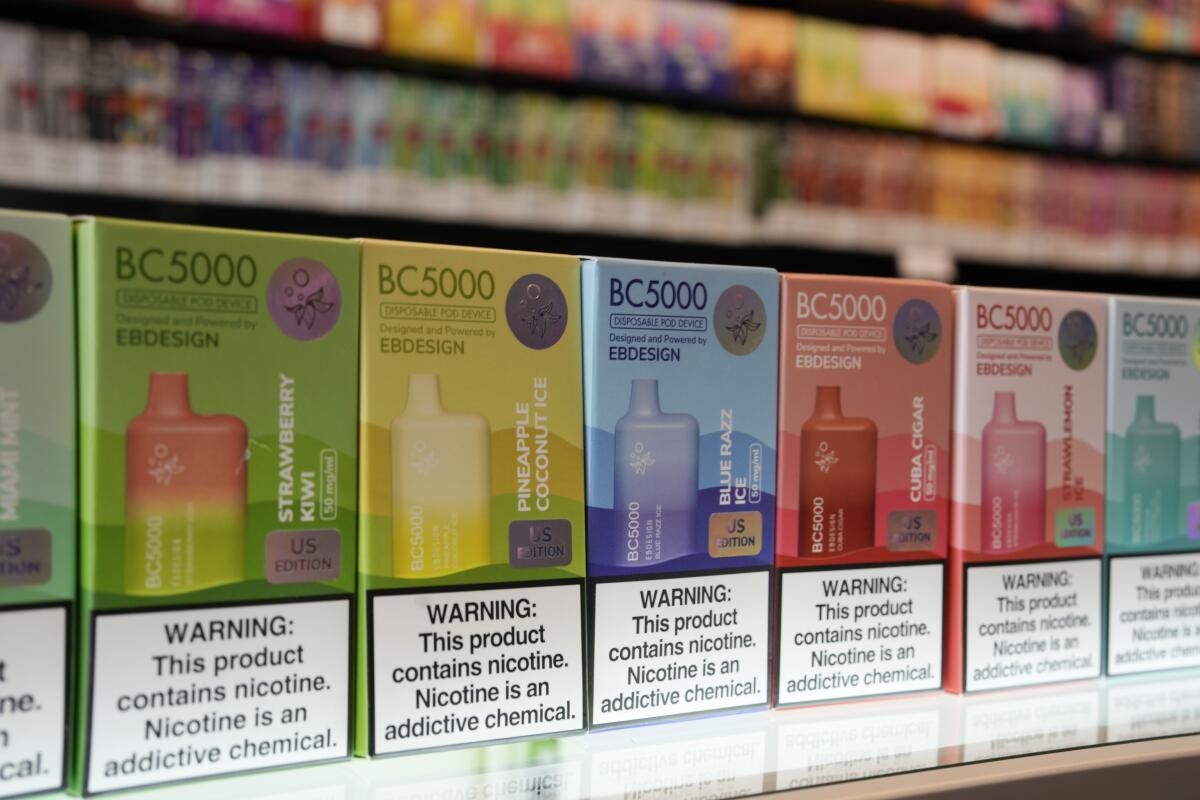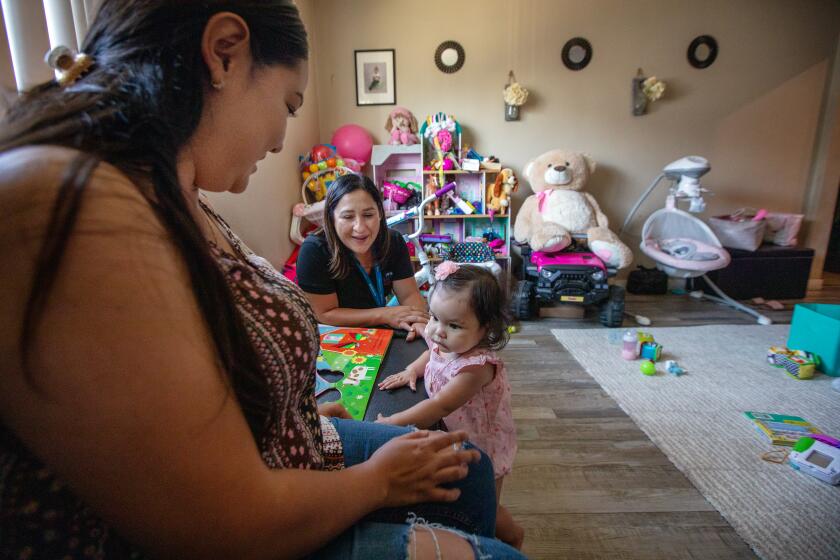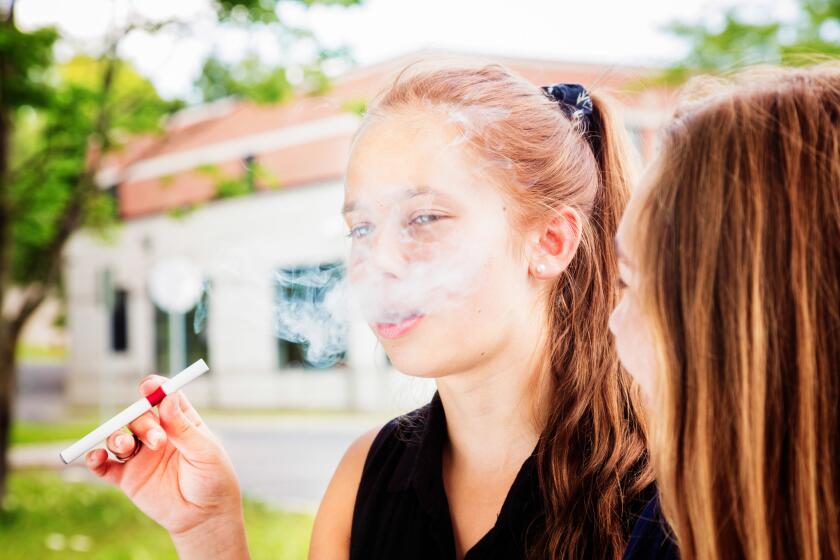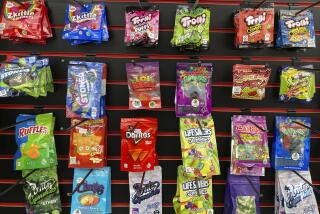Vaping by high school students dropped this year, CDC report says

- Share via
NEW YORK — Fewer U.S. high school students are vaping this year, according to a report published Thursday by the Centers for Disease Control and Prevention.
In a survey, 10% of high school students said they had used electronic cigarettes in the previous month, down from 14% last year.
Use of any tobacco product— including cigarettes and cigars — also fell among high schoolers, according to the report by researchers from the CDC and the Food and Drug Administration.
“A lot of good news, I’d say,” said Kenneth Michael Cummings, a researcher at the Medical University of South Carolina who was not involved in the study.
Among middle school students, about 5% said they used e-cigarettes. That did not significantly change from last year’s survey.
This year’s survey involved more than 22,000 students who filled out an online questionnaire last spring. The CDC considers the annual survey to be its best measure of youth smoking trends.
California’s tobacco tax funds resources for young kids. But with sales declining and a flavored tobacco ban in place, First 5’s child programs are at risk.
Why the drop among high schoolers? Health officials believe a number of factors could be helping, including efforts to raise prices and limit sales to children.
The FDA has authorized a few tobacco-flavored e-cigarettes intended to help adult smokers cut back. The age limit for sales is 21 nationwide.
Other key findings in the report:
• Among students who currently use e-cigarettes, about a quarter said they use them every day.
• About 1 in 10 middle and high school students said they recently had used a tobacco product. That translates to 2.8 million U.S. kids.
• E-cigarettes were the most commonly used kind of tobacco product, and disposable ones were the most popular with teens.
• Nearly 90% of the students who vape used flavored products, with fruit and candy flavors topping the list.
In the last three years, federal and state laws and regulations have banned nearly all teen-preferred flavors from small, cartridge-based e-cigarettes, such as Juul.
The FDA tried to ban flavors years before the vaping outbreak. Top Obama officials rejected the plan
In just 46 days, over 100 tobacco advocates helped nix the ban on flavored e-cigarettes that might have prevented addiction in teens. Here’s how.
But the FDA has still struggled to regulate the sprawling vaping landscape, which now includes hundreds of brands sold in flavors including gummy bear and watermelon. The growing variety of flavored vapes has been almost entirely driven by a wave of cheap, disposable devices imported from China, which the FDA considers illegal.
The CDC highlighted one worrisome and puzzling finding from the report: Although there was a decline in the percentage of high school students who said they had used at least one tobacco product in the past month, there was a slight increase among middle school students.
Usually those rates move in tandem, said Kurt Ribisl, a University of North Carolina researcher. He and Cummings cautioned against making too much of the finding, saying it might be a one-year blip.
The findings were published in the CDC’s Morbidity and Mortality Weekly Report.








